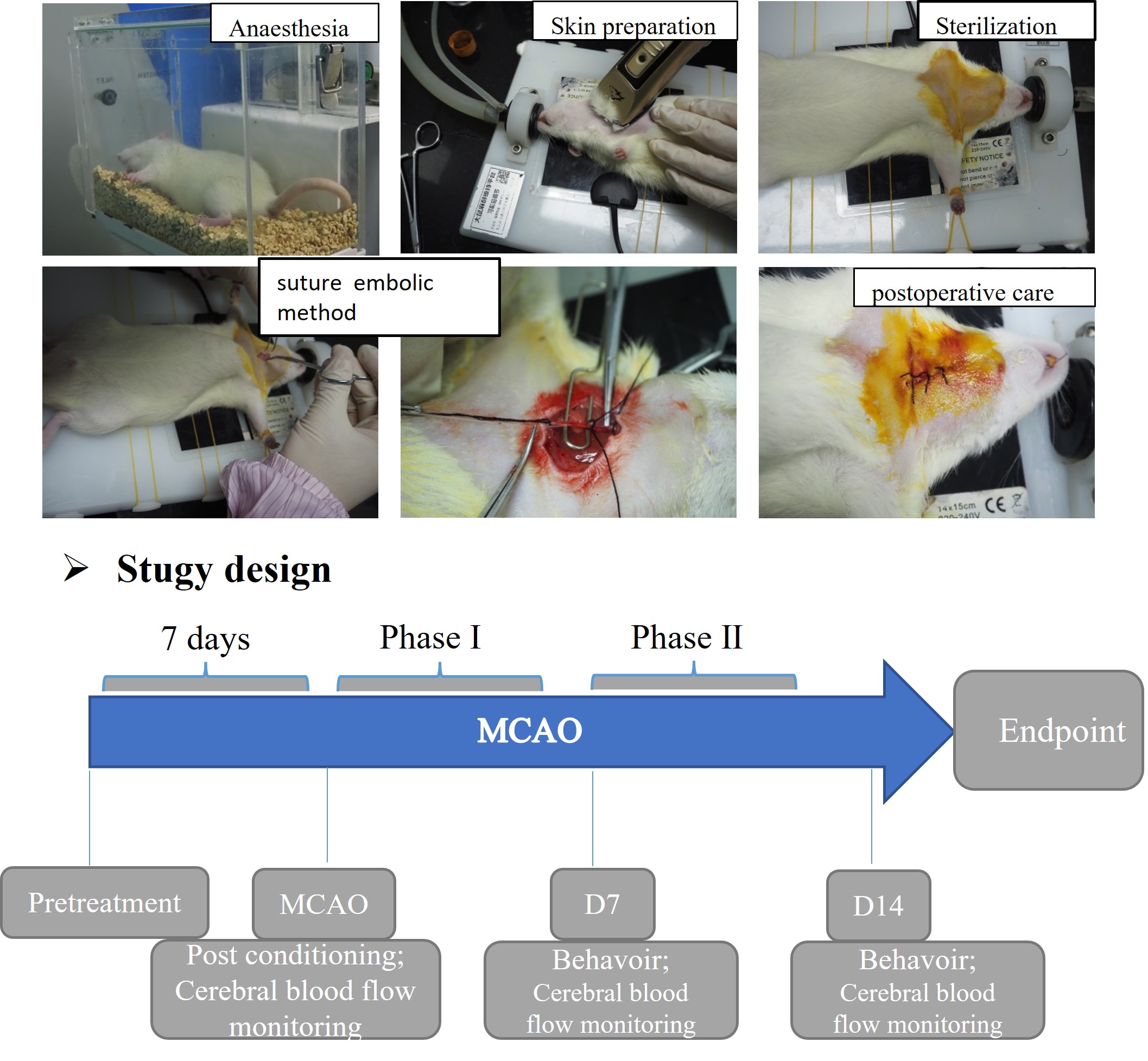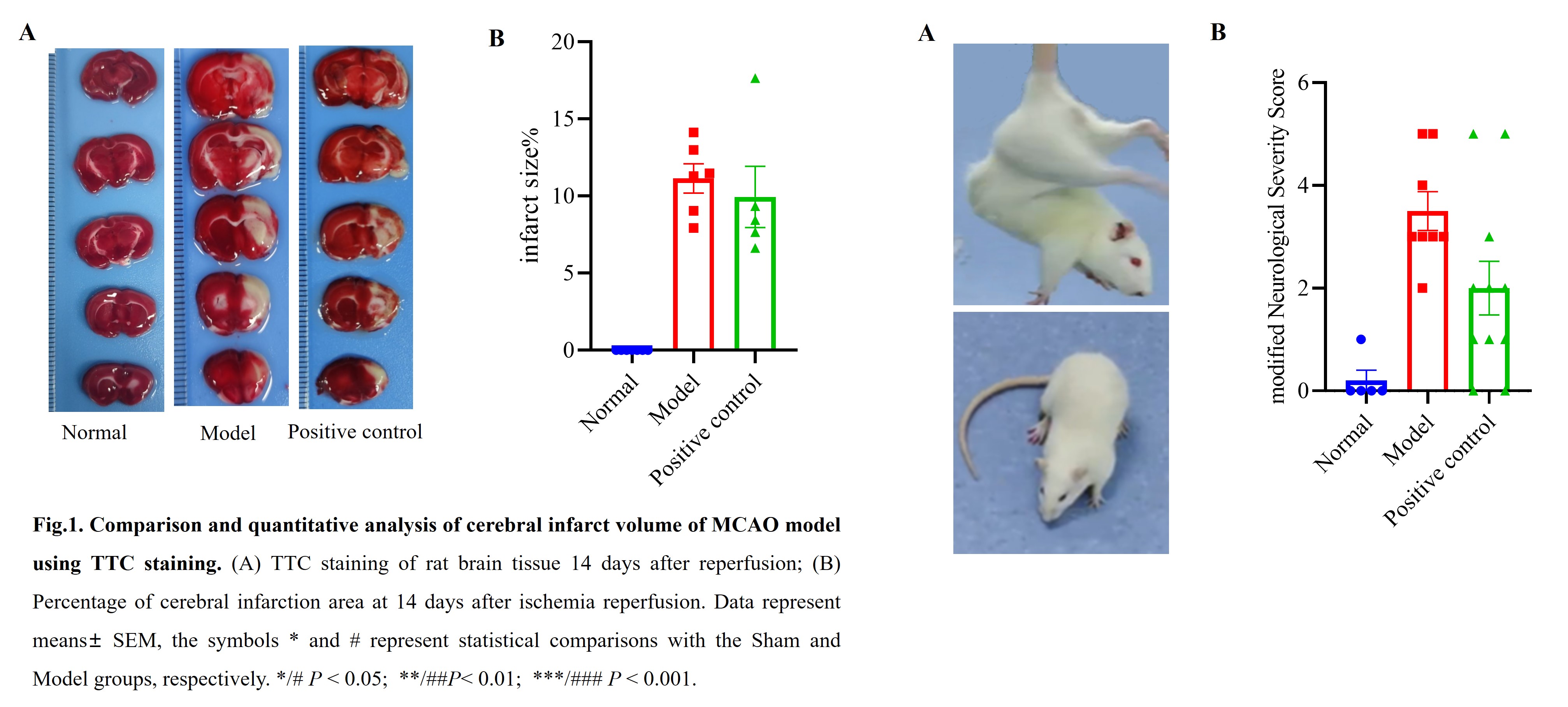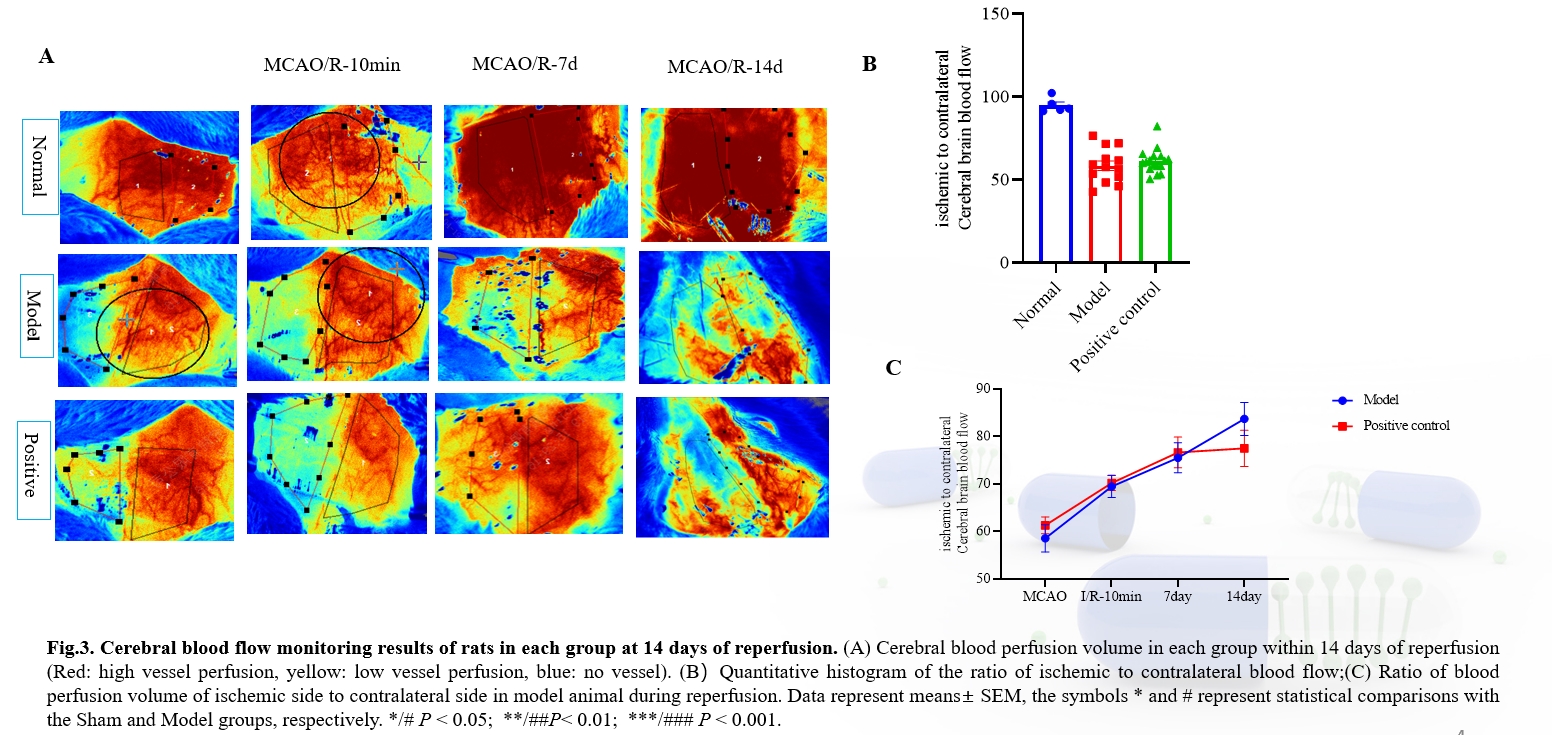

?Introduction
Focal cerebral ischemia, mimics occlusion of a cerebral artery either
by an embolus or local thrombosis, with middle cerebral artery occlusion (MCAO) being the most frequent, making it necessary to establish stable animal models and develop new therapeutic strategies to alleviate ischemic damage.
?Method
MCAO models can be subdivided into two groups: transient MCAO (tMCAO) and permanent MCAO(pMCAO). In tMCAO, the occlusion of the artery is sustained for a short period (between 30-120 min) and reperfusion is allowed after. In pMCAO models, the occlusion of MCA is maintained until animal sacrificed. The tMCAO mimics a therapeutic intervention (reperfusion) in stroke patients, while pMCAO does not reproduce a therapeutic intervention.
?Endpoint
Behavioral evaluation: Longa score, modified Neurological Severity Score.
Cerebral blood flow monitoring: Laser speckle imaging(LSI).
Histochemical stain: TTC staining, Nissl's staining, etc.

MCAO model in SD rats induced by suture method

MCAO model in SD rats induced by suture method
